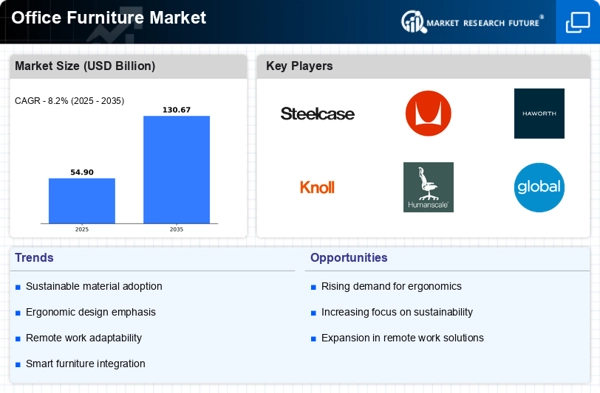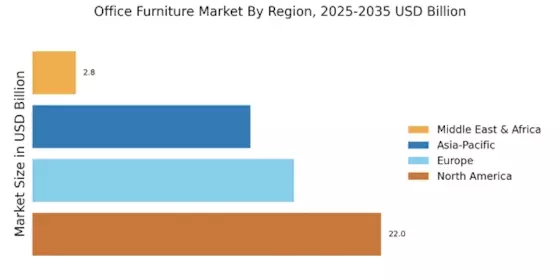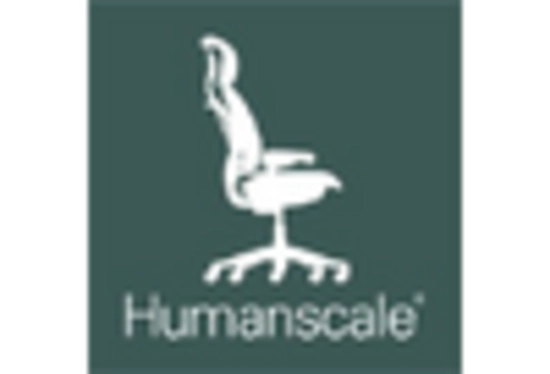The Office Furniture Market is currently characterized by a dynamic competitive landscape, driven by evolving workplace needs and a growing emphasis on sustainability and technology integration. Major players such as Steelcase (US), Herman Miller (US), and Haworth (US) are at the forefront, each adopting distinct strategies to enhance their market positioning. Steelcase (US) focuses on innovation through research and development, aiming to create adaptable workspaces that cater to diverse employee needs. Herman Miller (US), on the other hand, emphasizes sustainability, integrating eco-friendly materials into its product lines, which resonates with environmentally conscious consumers. Haworth (US) is actively pursuing regional expansion, particularly in emerging markets, thereby broadening its global footprint and enhancing its competitive edge. Collectively, these strategies contribute to a moderately fragmented market structure, where innovation and sustainability are pivotal in shaping competitive dynamics.
In terms of business tactics, companies are increasingly localizing manufacturing to reduce lead times and enhance supply chain efficiency. This approach not only mitigates risks associated with global supply chain disruptions but also allows for more responsive customer service. The competitive structure of the Office Furniture Market remains moderately fragmented, with key players exerting considerable influence through their strategic initiatives. The collective actions of these companies indicate a shift towards a more integrated and responsive market environment, where agility and customer-centricity are paramount.
In August 2025, Steelcase (US) announced a partnership with a leading technology firm to develop smart office solutions that leverage AI for workspace optimization. This strategic move underscores Steelcase's commitment to innovation and positions it to meet the growing demand for technology-enhanced work environments. By integrating AI capabilities, Steelcase aims to provide clients with data-driven insights that can enhance productivity and employee satisfaction, thereby reinforcing its competitive advantage.
In September 2025, Herman Miller (US) launched a new line of sustainable office furniture made from recycled materials, further solidifying its reputation as a leader in eco-friendly design. This initiative not only aligns with global sustainability trends but also caters to a growing segment of consumers who prioritize environmental responsibility in their purchasing decisions. The introduction of this product line is likely to attract new customers and strengthen brand loyalty among existing clients, enhancing Herman Miller's market position.
In July 2025, Haworth (US) expanded its operations in Asia by opening a new manufacturing facility in Vietnam. This strategic expansion is indicative of Haworth's focus on regional growth and its intent to capitalize on the burgeoning demand for office furniture in the Asia-Pacific region. By localizing production, Haworth can reduce costs and improve delivery times, thereby enhancing its competitive stance in a rapidly evolving market.
As of October 2025, the Office Furniture Market is witnessing significant trends such as digitalization, sustainability, and the integration of AI technologies. These trends are reshaping competitive strategies, with companies increasingly forming strategic alliances to leverage complementary strengths. The shift from price-based competition to a focus on innovation, technology, and supply chain reliability is becoming evident. Moving forward, competitive differentiation will likely hinge on the ability to adapt to these trends, with companies that prioritize innovation and sustainability poised to lead the market.


















Leave a Comment